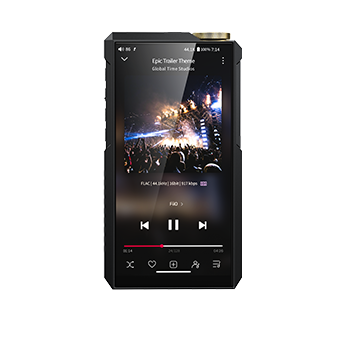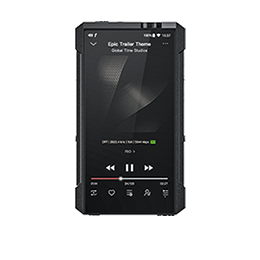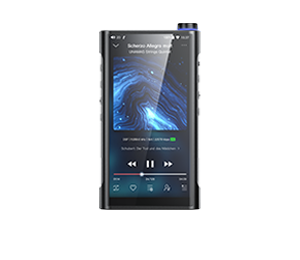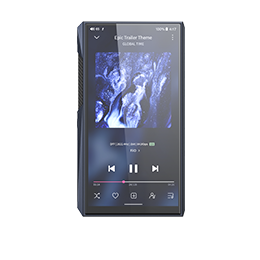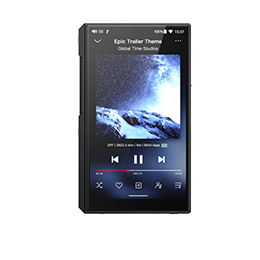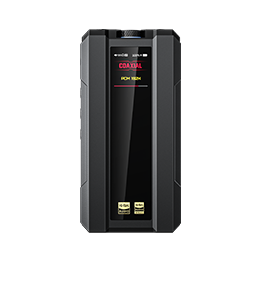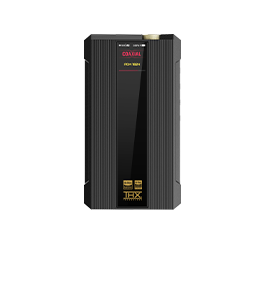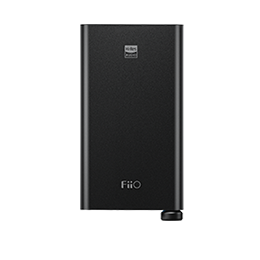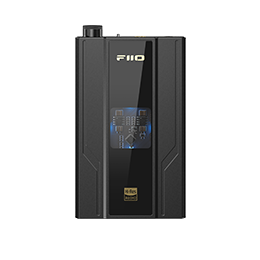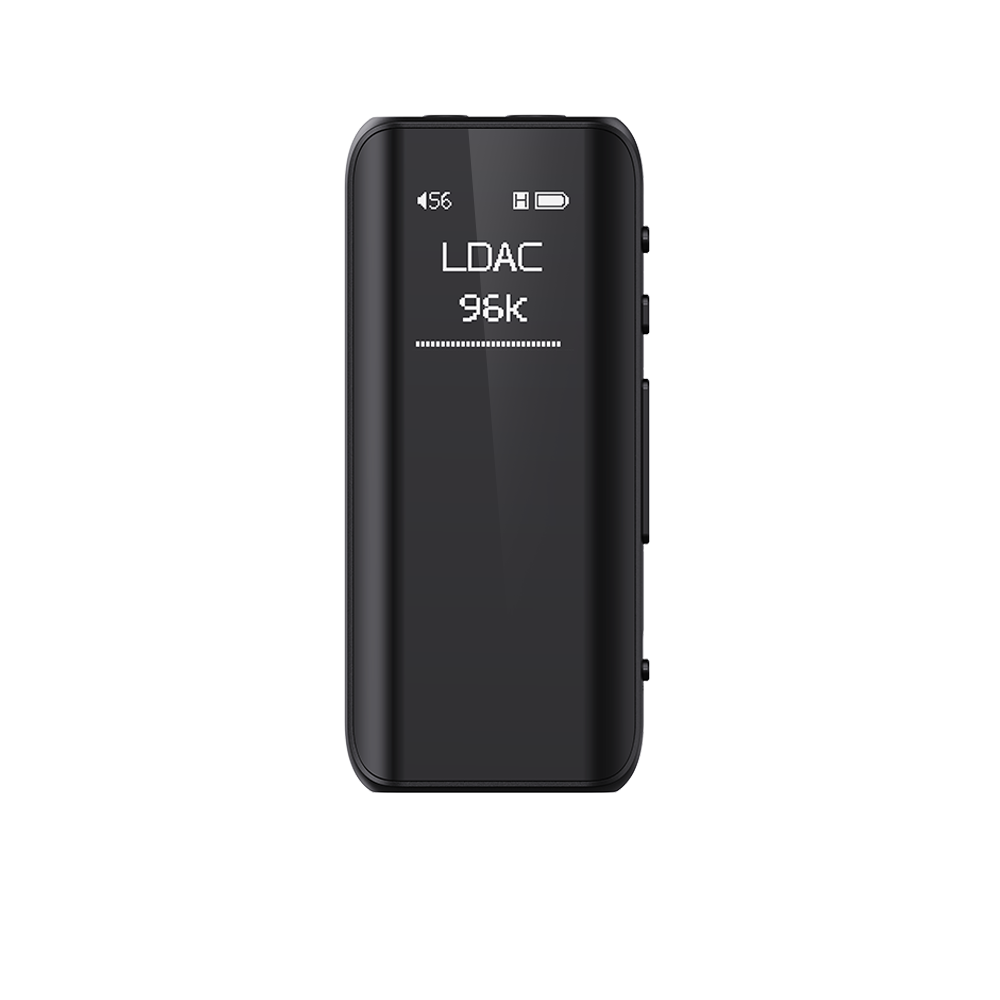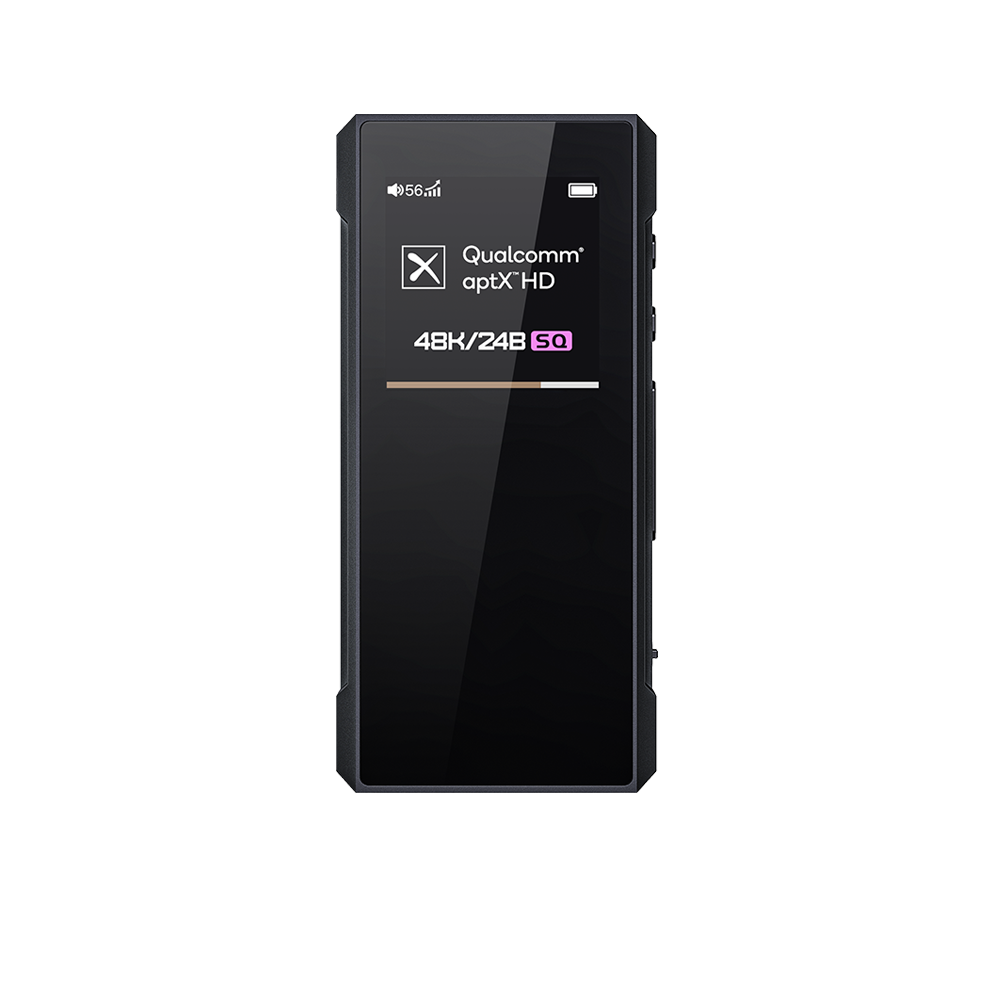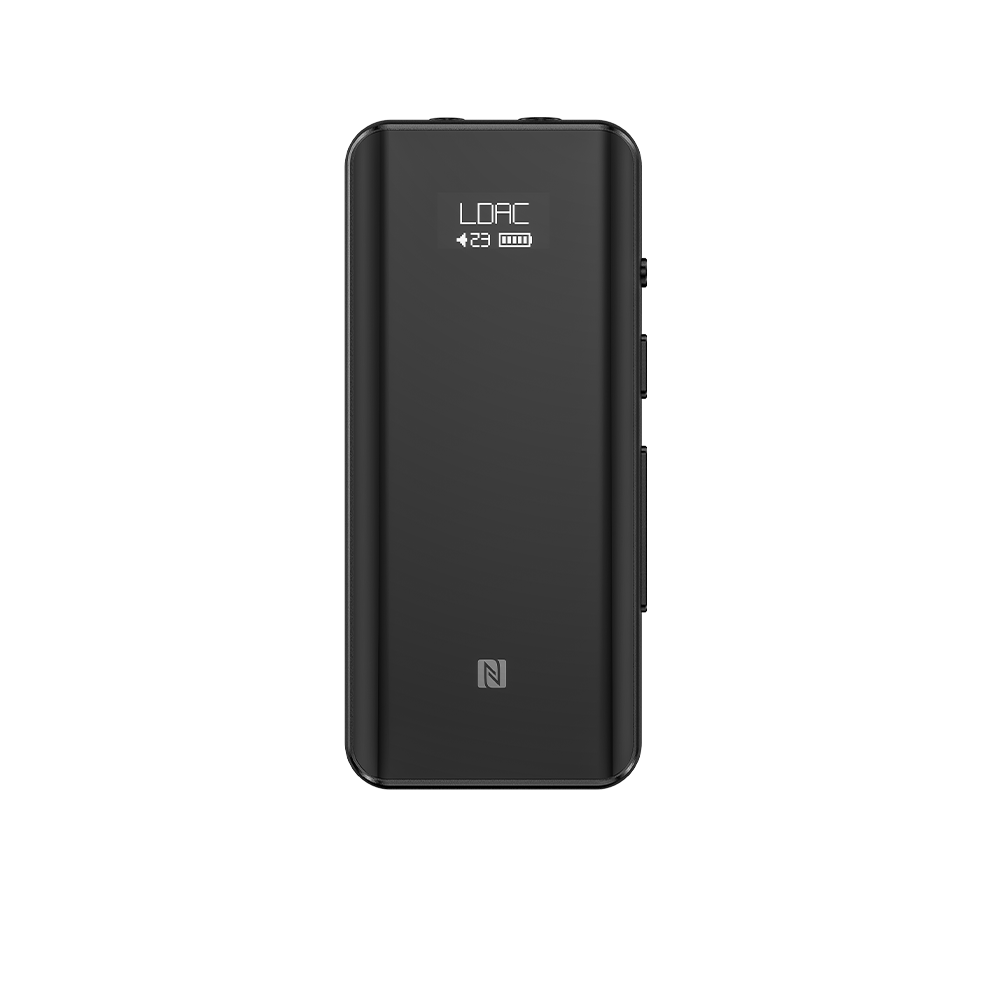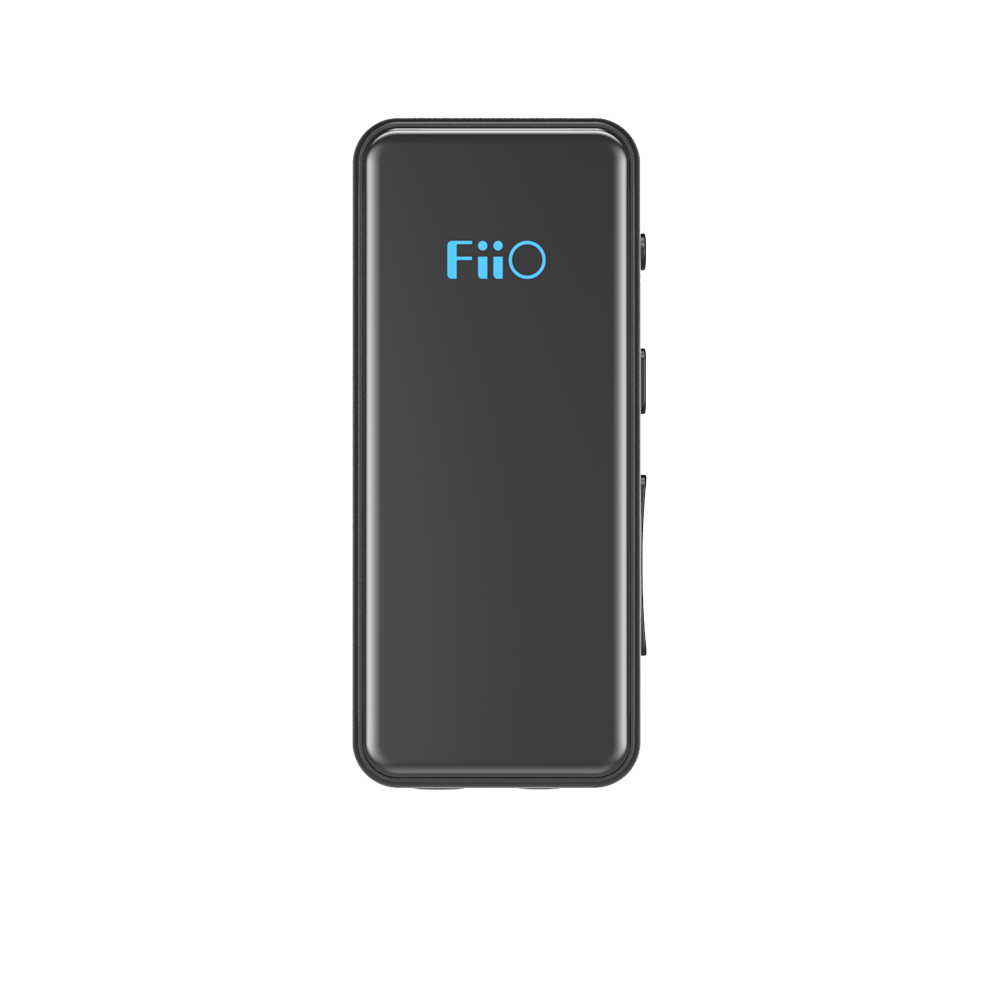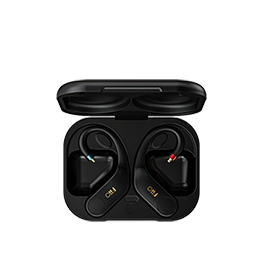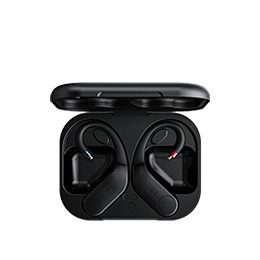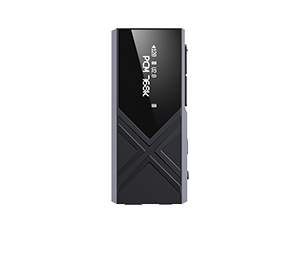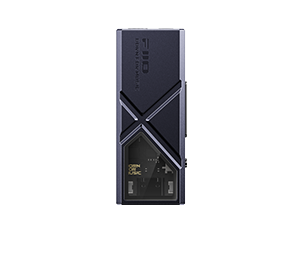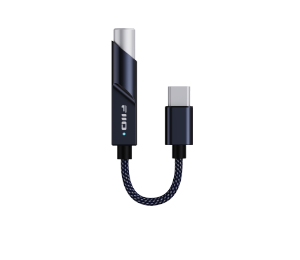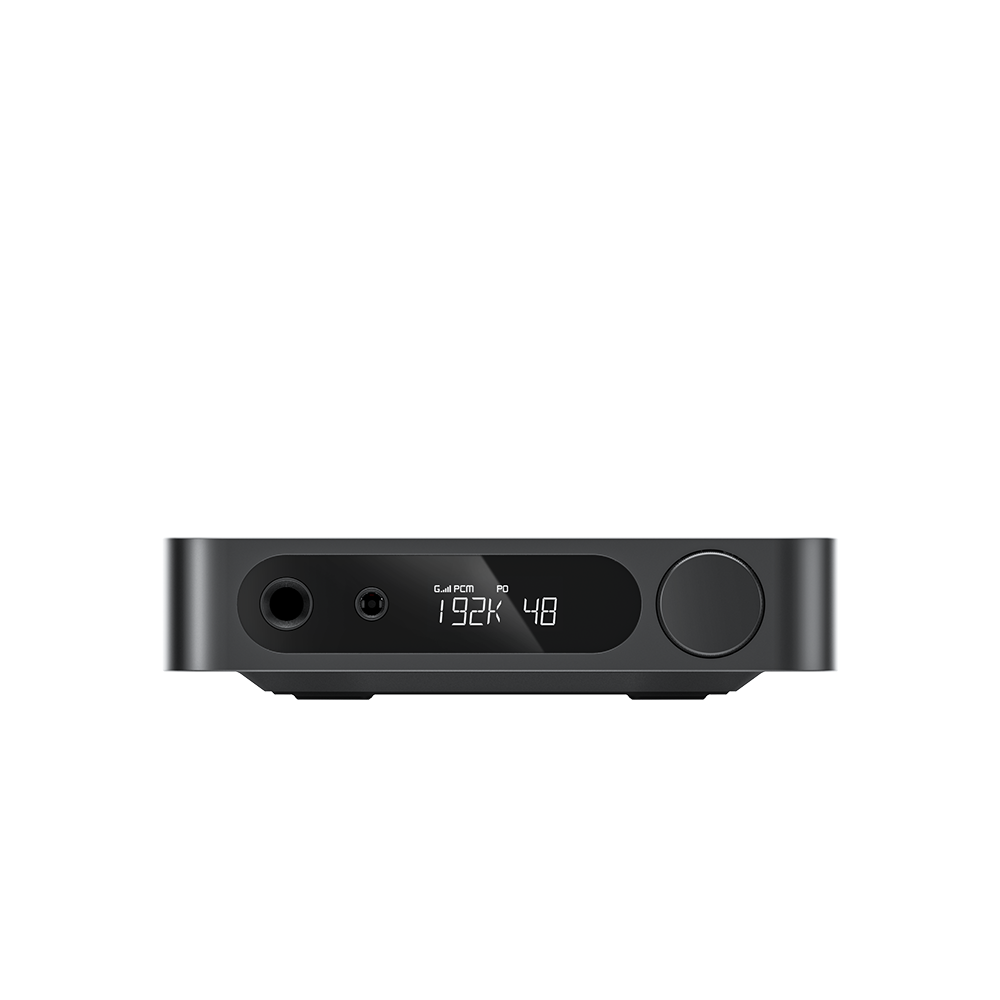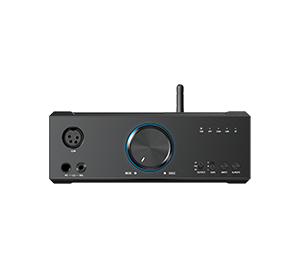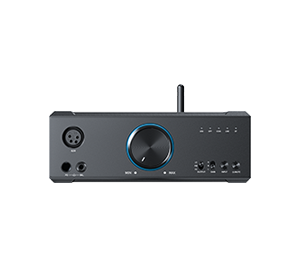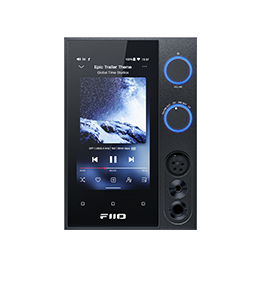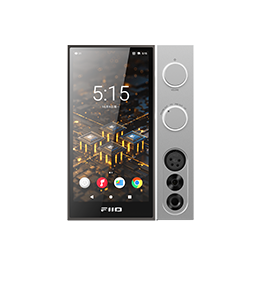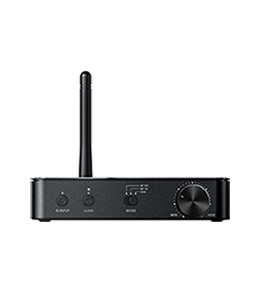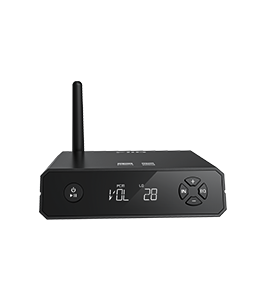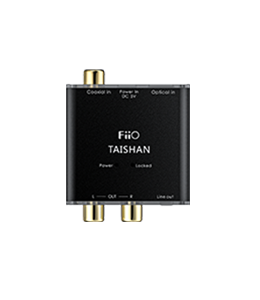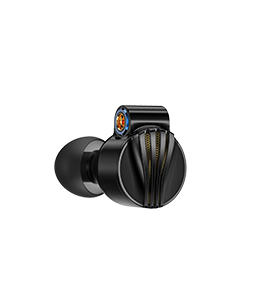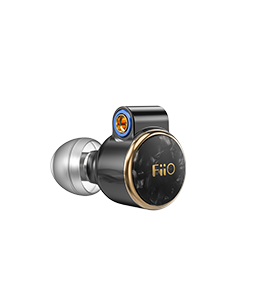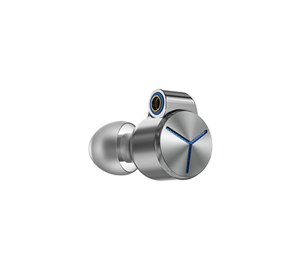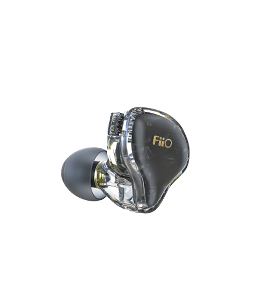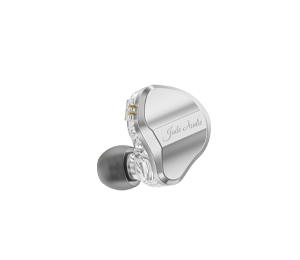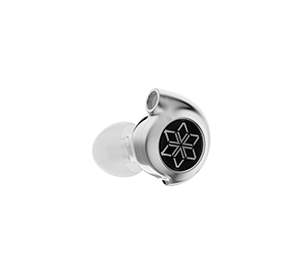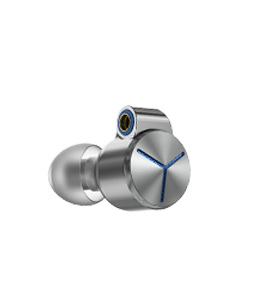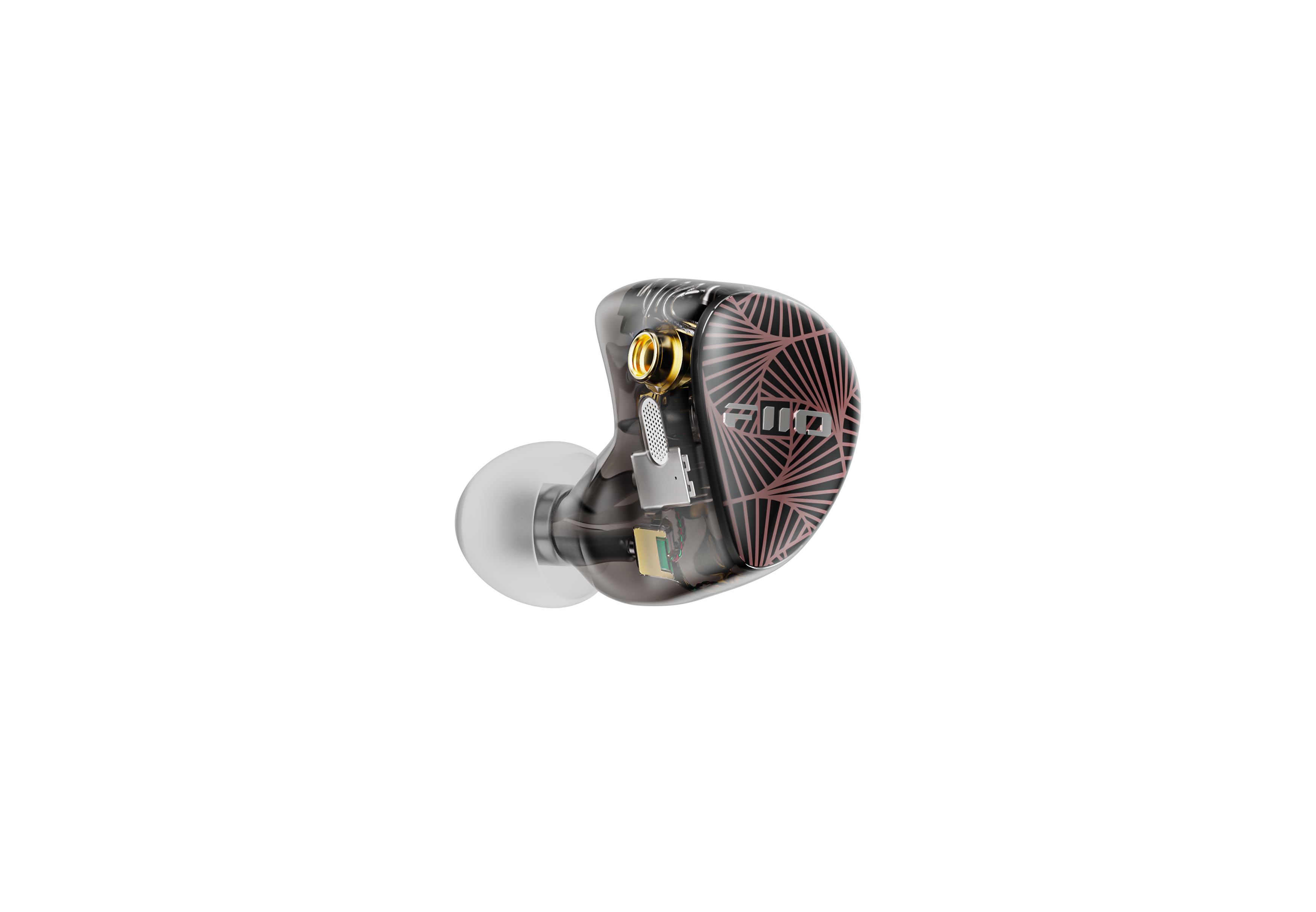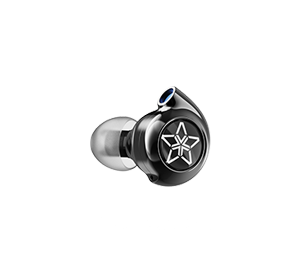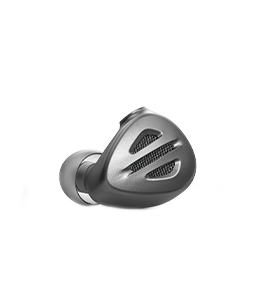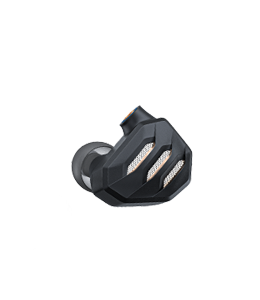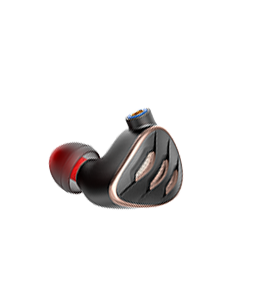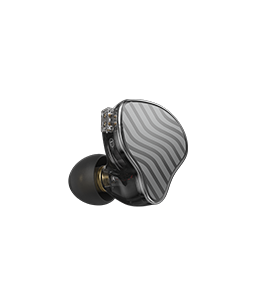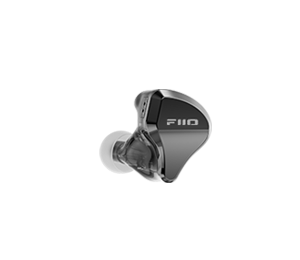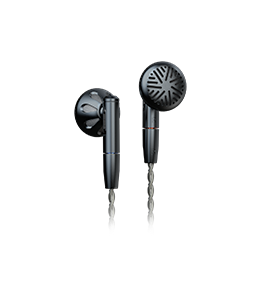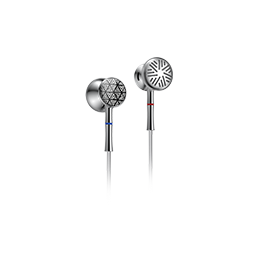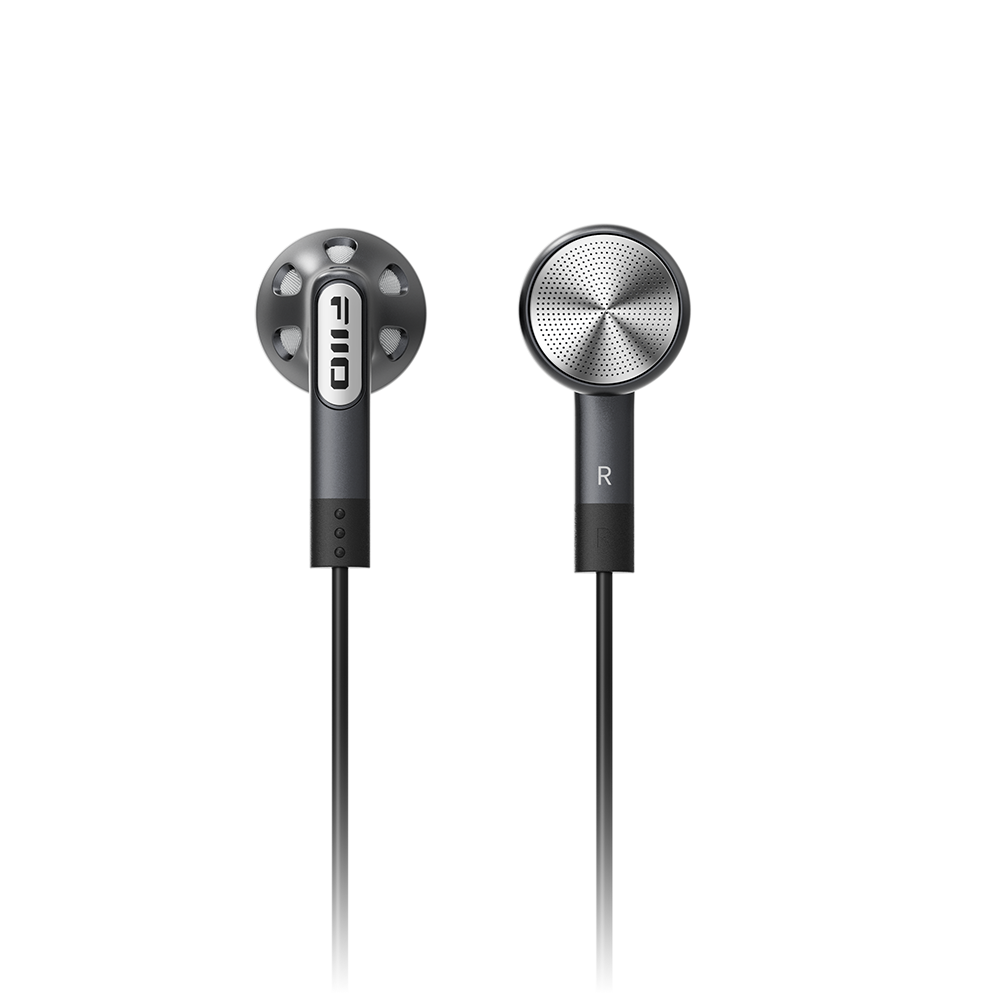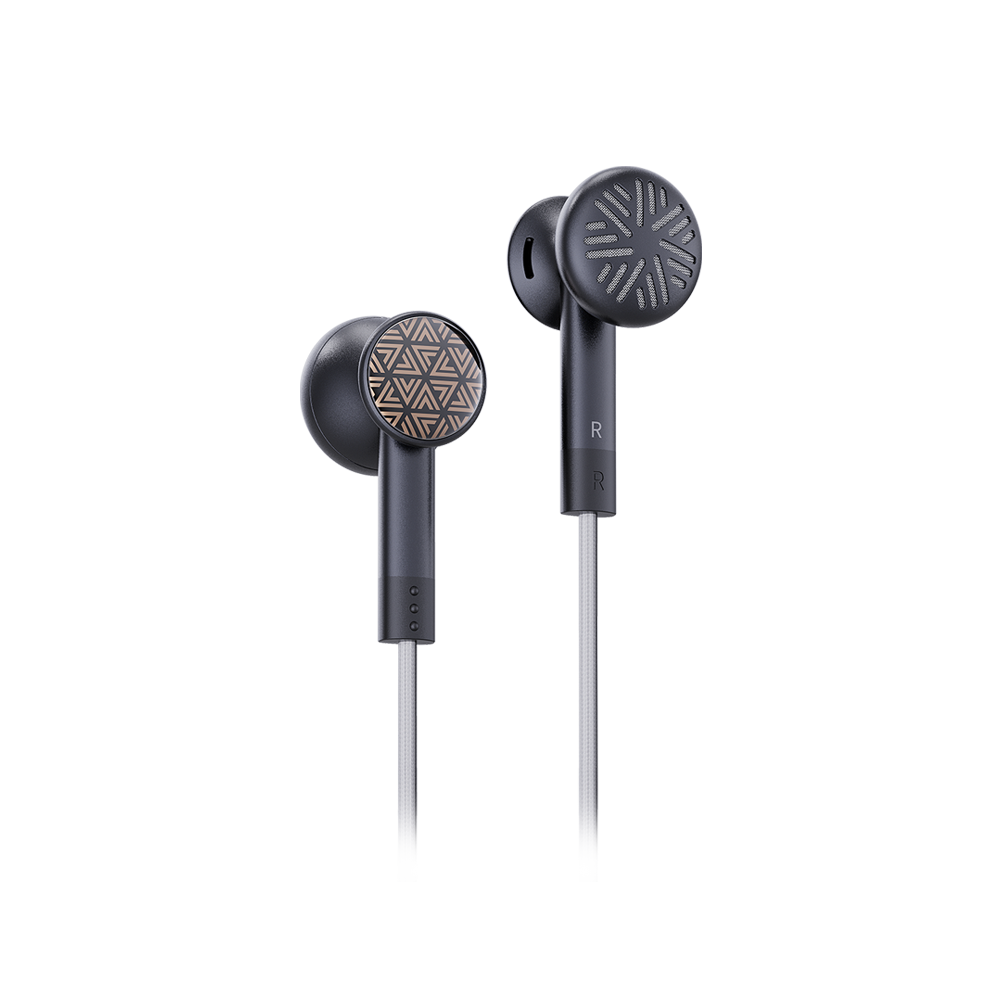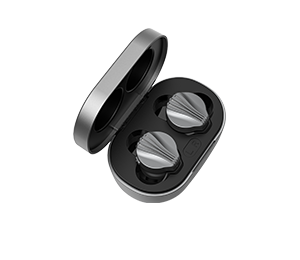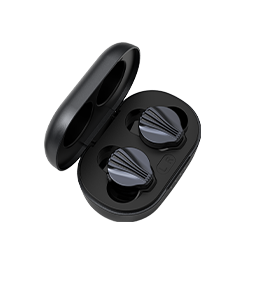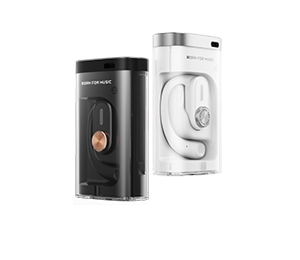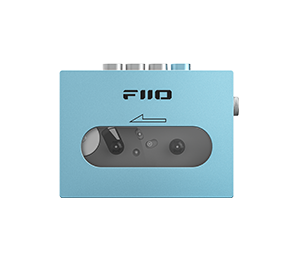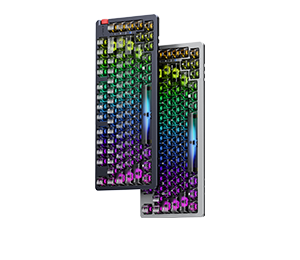FiiO M7 Digital Audio Player Review
Author:Paul Brooks
Review from:Headphone&Earphone Reviews
→→ Read the original article on Headphone&Earphone Reviews:>> Click here
INTRODUCTION
FiiO has over time evolved with an interesting line-up in Digital AudioPlayers (DAPs). They started with the original X3 (affordable), then over time developed the X1 series (budget/entry point), X5 (high-end) and X7 (flagship). Most are on their 2nd or 3rd generations now. Along the way, we were introduced to the tiny ultra-budget M3 in late 2015, and very recently they have introduced the M7. Is this the flagship of the M series line, and just how does it fit into FiiO’s overall line-up?
ABOUT FIIO
FiiO was first founded in 2007. Their first offerings were some extremely low cost portable amplifiers – which were sometimes critiqued by some seasoned audio enthusiasts as being low budget “toys”. But FiiO has spent a lot of time with their on-line communities, and continued to listen to their potential buyers, adopt their ideas, and grow their product range. They debuted their first DAP (the X3) in 2013, and despite some early hiccups with developing the UI, have worked with their customer base to continually develop the firmware for a better user experience. The X3 was followed by the X5, X1, X7 and most of these DAPs are now into their 2nd or even 3rd generations.
They’ve also developed new cables, desktop and portable amplifiers, DACs, ear-buds and earphones. FiiO’s products have followed a very simple formula since 2007 – affordable, stylish, well built, functional, measuring well, and most importantly sounding good.
DISCLAIMER
The M7 Digital Audio Player (DAP) that I’m reviewing today was provided to me freely as a review sample. FiiO have asked me to keep it for my personal use, or for follow up comparisons, and I thank them for this. The retail price at time of review is ~ USD 200.
PREAMBLE
If you haven’t read any of my reviews, I suggest starting here, as it will give you an insight into my known preferences and bias.
For the purposes of this review – I used the FiiO M7 predominantly solo (no additional amp) and tested most of the functions I am able to. I have prior experience with entry level Sony’s (very early models), then step-ups to the Cowon iAudio7, iPod Touch G4, iPhone 4, 5S and SE, HSA Studio V3, FiiO X5, X1, X3ii, X5ii, X7, X1ii, X7ii, X3iii, iPhone SE, Cayin i5, N3 and N5ii, and the L&P LP5, L5 Pro, and L3.
In the time I have spent with the M7, I have noticed no change to the overall sonic presentation (burn-in). This is a purely subjective review – my gear, my ears, and my experience. Please take it all with a grain of salt – especially if it does not match your own experience.
WHAT I PERSONALLY LOOK FOR IN A DAP
I thought I’d list (before I start with the review) what I really look for in a new DAP.
Clean, neutral signature – but with body (not thin)
Good build quality
Reasonable battery life – at least 8-10 hours
Easy to use interface
Able to drive both low impedance and (within reason) higher impedance cans without additional amping.
Value for money
Enough storage to hold either my favourite albums in red-book, or my whole library in a reasonably high resolution lossy format (for me – aac256)
Gapless playback
Replay gain if available
Reasonable EQ
Bluetooth/Wireless if available
DAC if available
Did I get all of this with the M7, and more importantly was the M7 a value proposition when compared to other DAPs I’ve tried? Read on and we’ll try and answer some of those questions through the review.
THE PACKAGE
The M7 arrived in a 96 x 170 x 41mm retail outer box (over internal box and lid). The outer box is white and black with a picture of the M7 on the front. Opening the box reveals an inner box with foam insert which holds the M7, and underneath this are the other accessories. The total accessory package with my unit included:
1 x USB mini to USB C charging and data cable
1 x silicone clear case
1 warranty card
1 operational manual
1 x Open Source information booklet
1 quick start instruction for USB our connections
I guess what surprises me is the lack of USB C to USB micro cable – which would be ideal for a lot of people who are intending on using the M7 as a transport. USB C is still not really a common format – and this could have been a nice opportunity – unfortunately missed.
THE TECHNICAL SPECIFICATIONS
I’ve included appropriate tech specs for the M7, and also FiiO’s X3iii and X3ii players which are in similar price brackets.
| Model | M7 | X3 2nd Gen | X3 3rd Gen |
| Approx current price | ~$200 USD | ~$160 USD | ~$190 USD |
| Dimensions | ~ 109 x 52 x 13 mm | ~ 97 x 58 x 16 mm | ~ 114 x 59 x 13 mm |
| Weight | 116 g | 135 g | 126 g |
| DSD Support | Yes up to DSD64 | Yes up to DSD128 | Yes up to DSD64 |
| Lossless PCM Support | APE, ALAC, AIFF, FLAC, WAV, WMA | APE, ALAC, AIFF, FLAC, WAV, WMA | APE, ALAC, AIFF, FLAC, WAV, WMA |
| Lossy Support | MP3, AAC, WMA, OGG | MP3, AAC, WMA, OGG | MP3, AAC, WMA, OGG |
| Use as external DAC | No | Yes | Yes |
| Battery | 1880 mAh | 2600 mAh | 2350 mAh |
| Play time | ~20hr | ~11hr | ~10hr |
| DAC Chip | ES9018Q2C | CS4398 | PCM 5242 x 2 |
| Main amp chip | Included in ES9018Q2C | OPA1612+LMH6643 | OPA1622 |
| Soc | Exynos 7270 | JZ4760B | JZ4760B |
| SNR (H/O) | ≥117 dB (A-weighted) | ≥113 dB (A-weighted) | ≥112 dB (A-weighted) |
| THD+N (H/O) | <0.004% (32Ω/1kHz) | <0.001% (32Ω/1kHz) | <0.002% (32Ω/1kHz) |
| Output to 16ohm | 70 mW | 224 mW | 120 mW SE, 110 mW Bal |
| Output to 32ohm | 40 mW | 200 mW | 160 mW SE, 190 mW Bal |
| Output to 300ohm | N/A | 24 mW | 15 mW SE, 20 mW Bal |
| H/O Impedance | <2Ω | <0.2Ω | <1.4Ω SE, <1.2Ω Bal |
| Line Out? | Yes – combined with H/O | Yes – separate outputs | Yes – combined with H/O |
| Digital Out? | Yes – via USB | Yes – combined with L/O | Yes – combined with H/O |
| Internal Storage | ~2 Gb | Nil | Nil |
| External Storage | Single sdxc (up to 512 Gb) | Single sdxc | Single sdxc |
| Screen | 80×800 TFT | 320×240 TFT | 320×240 TFT |
| OS | Custom FiiO (Android) | Custom FiiO | Custom FiiO (Linux) |
| Wireless | Bluetooth | No | Bluetooth |
MEASUREMENTS
FiiO has a selection of graphs on their website, and they show a nicely flat response from 20 Hz to 20 kHz (under 32 ohm load), and less than 0.5dB down at both ends of the frequency spectrum. Channel matching is excellent – as you’d expect from FiiO devices.
BUILD
External
The M7 is a really well put together DAP. The casing is an anodised aluminium (you can get it in black, silver, red or blue) with slightly bevelled edges. It is essentially a very rectangular player, no real rounded corners, and whilst the joins aren’t sharp – there are definite edges. Funnily enough, because of its sleek size, the very clean angular lines seem to suit it aesthetically. It feels very comfortable for one handed use, and at 116g its solid enough to feel reassuring and light enough to be very portable.
On the left side is a volume pot which has great tracking and a smooth operation (the M7 has 60 distinct volume steps). Below this are the previous/scrub back, play/pause, and next/scrub forward buttons. These have a distinct feeling click and are both easy to locate and operate. At the top is the on/off/wake button (with LED indicator), and a 3.5mm combined headphone-out and line-out port (switchable via software). At the right is the single micro SDXC slot – which accepts up to 512 Gb of expandable memory. At the bottom is the new USB C port for both data and digital audio transmission.
The front is dominated by the TFT touch-screen (480×800 resolution) with a pixel density of 292ppi. The screen is (to me anyway) quite vibrant even at close to 180 deg viewing angles, and is quite clear. I personally find it a lot better visually than any of FiiO’s earlier players, and only really comparable to the X5 and X7 later series touch-screens. The other surprising thing with the M7 screen is that it really isn’t a finger print magnet. Yes – you’ll still get some smearing, but nowhere near the same as some of their other DAPs. Whatever you’re doing FiiO, get this technology on your flagships!
Internal
Internally the M7 utilises some of the newer technology available to full effect. At the heart of the M7is the ES9018Q2C DAC with integrated amplifier and LPF. This has very low distortion figures and equally impressive SNR – and this is very apparent in the low noise floor and very black background of the M7. The SoC driving the software is Samsung’s Exynos 7270 and with two ARM Cortex A53 cores there is plenty of processing power for the GUI whilst the energy consumption is 20% down on other FiiO SoCs – allowing greater power efficiency and more battery life.
The Bluetooth chip/codec is Samsung’s S5N5C10B01-6330 which utilises the Bluetooth 4.2 standard and supports not only aac and sbc, but also aptX, aptX HD and Sony’s LDAC codecs. FiiO also has functionality for FM radio reception, using an Si4705 receiver. And the M7 also supports USB digital audio out (although they only guarantee operation with their own Q5 and Q1ii DAC/amps.
GUI
For this review, I am using FiiO’s 1.02 fw which is the latest release at time of writing.
The M7 GUI uses a simple Android menu system combined with some tried and true features from their FiiO music app already utilised in their X5iii and X7i and ii devices. At first boot you are presented with a very simple menu with 6 options – FiiO Music, FM Radio, File Management, Gallery, Tech Support and Settings. There are also two universal actions in the GUI. Swipe up from the bottom of the screen from the left goes up one level, and swipe up from the right side returns you to the main menu. This is actually pretty handy once you get used to it.
Tech Support has a full copy of the manual along with some answers to FAQ, and also a button to initiate fw upgrades. Settings gives you simplified Android options for controlling preferences for everything from Bluetooth, radio bands and and general audio to power and language options, and even ability to customise your lock-screen. Its well laid out, and anyone familiar to other Android DAPs or smart-devices should find it pretty intuitive.
File management, the gallery and FM radio are all pretty simple (I’ll cover radio in the feature section), so lets spend our time in the FiiO music app.
The FiiO music app will be pretty well recognised by anyone who has used their devices before. The FiiO Music home screen has the currently playing album (which you can go to play screen by simply tapping on it), and icons for tagged and folder browsing – including the usual Artist, Album, Track and Genre tagged options. There is also the option to access playlists and folder browsing. Below this is 3 options for recalling recently played and added tracks, and also the most played songs.
At the top right is a settings options, and from this you can control most of the options available within FiiO music including gapless, play through folders, the device theme (black or white) and resume options (see the pictures for a full list of options). At the top of the screen is the status bar – which includes volume level, SD card status time, battery life, what audio out plug is being used and Bluetooth status.
The now playing screen is clean and simple – but its also pretty versatile. Swipe from the left and you get your current track list. Swipe to the right and you get lyrics – if you have an lrc file in the directory. Tapping on the album cover gives you some basic track information including file type, bit depth bit rate and sample rate – but it also exposes a small menu. This menu gives immediate access to EQ, play type (eg shuffle, play once etc), playlists, one touch adding to the favourites track-list, and options to delete or get full track info. Below the album artwork is also a scrubbing bar, and simplified play controls (these can also be activated via the side buttons).
Overall the app is extremely snappy, and I’ve notice no lag at all. Scrolling through long lists is very quick, and I would definitely give the GUI the thumbs up. It has also been very stable for me to date (no crashes).
FEATURES PRESENT
The M7 is a mix of feature rich, and some features missing – and ultimately your usage will dictate whether there is value in FiiO’s choices. So lets start with some of the obvious ones (we won’t be able to cover everything – but I’ll try and get to most of the main ones).
FM Radio
This is a bit of a miss for me. The settings give you the options of broadcasting regions in Asia, America, Australia, Europe and Japan (this sets the audio bands). I set mine initially to Australia – but reception was awful, so I switched to Asia and it improved. Running the band search from home netted no stations and dialling in manually managed some signals but they were very weak. We are about 6km from central Invercargill, so I tried again from work the next day (we are one block away from some FM transmitters). Reception was better but still not crystal clear. I’ve tried several times since, and sometimes the reception is better – sometimes worse, but its never completely clear. I’ve talked to others and they are faring better in their own part of the world – so I’m assuming this could be simply down to the fact that our reception is pretty poor. I genuinely hope it works better for others – but for me its a miss rather than a hit. While I’m doing the final edits I’ve actually got one relatively clear station – but this is very much an exception rather than a rule.
Blue-tooth
I used a pair of XTZ Divine, and Blue-tooth pairing was both rapid, and extremely solid (using aptX). I didn’t experience a single glitch in 2 hours of testing the connection. Range was extremely good too – and I was able to get out to 15 metres (and that was with two walls) before having signal drop outs. What’s more – the headset controls also worked perfectly. Likewise with the Q5 – connection was rock solid and range was similar. The final test was with a Trinity Audio lanyard, and this was also pretty good – just a little shorter in range (about 10-12m) and not quite as stable. It has much smaller and older Blue-tooth hardware though and was connecting via the SBC codec rather than aptX (not sure if this contributed to the stability). Once again – the head-set controls all worked perfectly. So two thumbs up for Blue-tooth operation. Unfortunately I was unable to test LDAC.
USB Audio Out
I have a USB C to micro USB cable, so was able to test several of the DAC/amps I have on hand. I had success with the Q5 and Q1ii (as FiiO advertises), and the only time the Q1ii started misbehaving was when its battery started to get low (it dropped the connection and started to pull power from the M7). The E17K also worked beautifully. The devices I tried but could not get working included the Cozoy Takt Pro and Aegis, FiiO K1, and also the LMS HVA. Overall though – the USB audio works for the devices FiiO has advertised, and I guess it will be pot luck with other devices. I did not have an appropriate cable to test OTG. I did test DOP with the Q5, and the M7 was able to send a pure DSD signal to the Q5.
Equaliser
Works as advertised, and if you’ve used FiiO’s 10 band EQ before you’ll be right at home. A nice touch to have easy access with a couple of taps too.
Gapless
Works perfectly with FLAC files. With aac there is a very tiny micro gap – its there but not very noticeable. Overall this gets a pass from me.
Search functionality
Standard Android search functionality is active, and works perfectly. If I search for “Pink” I get tracks with that term in the tile, as well as the artist Pink Floyd and a list of albums. Nice job FiiO.
CTIA functionality (head-sets)
Works brilliantly – and this was with both FiiO’s own earphones/IEMs and also my HD630VB. In fact the HD630VB and M7 combo is one of the best I’ve heard considering the price bracket.
External Playlists
I have an M3U8 playlist for my test tracks, and I use this whenever testing a new DAP. This worked perfectly with the M7, and I had no hiccups loading or playing with it.
Replay Gain!
From their recently released FW update (1.0.3), replay-gain is now working, and working perfectly! Fantastic.
Format Support
I have personally tested MP3, AAC, ALAC, FLAC, APE, AIFF, WAV, OGG and DSD and can confirm they are all working at a variety of resolutions.
FEATURES ABSENT
The following are a list of features I would want available – especially given the $200 price point.
Use as a DAC – this is currently missing, although FiiO have said they may add it in future. Their problem is that most competition around this price bracket (and cheaper – eg Cayin N3) all include DAC functionality. Its a big missing feature and I’m really surprised its not included.
No ability to add other software players (eg Neutron etc). If I’m shuffling, most of the time I use Neutron. Why – because of the replay-gain (see above point). With the M7, I not only miss this feature, but also the ability to introduce it via alternate players. Along with that, I don’t get the option of the other excellent DSP options Neutron has.
BATTERY LIFE
FiiO advertises 40 hour stand-by and 20 hours playtime. I have no reason to doubt these figures, and to be quite honest I haven’t fully tested the battery yet – beyond day-to-day use. What I can state is that I’ve had the unit on standby for two days on a full charge, and when I woke it up, it showed 1% and would still boot. And I could easily get 2-3 days play-time when I was at work – so that indicates to me that the 20 hours is pretty good. I will try to take measurements pretty soon. Charging from a fast charger (empty to full) was definitely under 3 hours.
POWER
 The M7 is not a powerful audio player, and realistically you want to try driving anything much over 75-100 ohms (depending on the sensitivity). Its really designed for IEMs, ear-buds and portable headphones. My tests involved a combo of easy to drive IEMs, and headphones – and then a couple of harder ones.
The M7 is not a powerful audio player, and realistically you want to try driving anything much over 75-100 ohms (depending on the sensitivity). Its really designed for IEMs, ear-buds and portable headphones. My tests involved a combo of easy to drive IEMs, and headphones – and then a couple of harder ones.
The M7 easily drove the FiiO F9 Pro (28 ohm / 106 dB/mW sensitivity) to peaks (a-weighted) just under 100 dB, and this was repeated with the 7 driver per side LZ Big Dippers (25 ohm / 115 dB/mW sensitivity). Unless you have a pair of IEMs with extremely low impedance (ie under 16 ohms – as the M7’s OI is ~ 2ohms), then it should be able to drive most portable/IEMs out there.
The Sennheiser HD630VB (23 ohm / 114 dB 1kHz/1Vrm sensitivity) was next and once again the M7 at full volume could get them to just under 100 dB. As a comparison 23/60 with Dylan’s “License to Kill” was giving me 70dB (my normal listening level) and 30/60 took this to 80 dB (too loud for me).
 So how about something harder to drive? First up was MEE’s P1 (50 ohm / 96 dB/mW sensitivity). This topped out with peaks at around 95dB and averaged 90dB, but I was surprised at how well the M7 drove them. 30/60 was giving average listening dB levels into the early 70’s and they sounded pretty good to my old ears.
So how about something harder to drive? First up was MEE’s P1 (50 ohm / 96 dB/mW sensitivity). This topped out with peaks at around 95dB and averaged 90dB, but I was surprised at how well the M7 drove them. 30/60 was giving average listening dB levels into the early 70’s and they sounded pretty good to my old ears.
The final IEM was HifiMan’s RE2000 (60 ohm / 103 dB/mW sensitivity). Peaks were very similar to the P1, and for my listening preferences, 25/60 sounded wonderful with the M7 + RE2000 combo. Again – no signs of the earphone being under-driven to me.
So the verdict – the M7 is perfect for portable IEMs, ear-buds and headphones – but for anything very high impedance or very low sensitivity – you’re going to need an amplifier.
SOUND
Preface
I’m going to preface this section with a little critique I received a while ago, and my answer to it – so that you can understand why I don’t comment on some things, and why I do comment on others. I was told my review on another device was poor because I didn’t include sections on bass, mid-range, treble, sound-stage, imaging etc – yet referred to the device as warm, full, or lean.
Now I can understand the reference to warm / full / lean – as they are very subjective terms, and whilst I’d like to avoid their use, they are invaluable to convey true meaning. Comparing my NFB-12 to the Aune X1S for example – the Audio-gd does sound richer and warmer. It’s the nature of the DAC and amp which is used.
But I choose not to comment on bass, mids, treble, and most definitely not sound-stage – simply because when we are talking about a DAC/amp or DAP – IMO they shouldn’t be discussed. The DACs job is to decode the signal in as linear fashion as possible, and the amp’s job is to amplify the signal with as low distortion as possible. If the device is doing its job properly, there is no effect on bass, mids, or treble – except if hardware boost is concerned or if there is an impedance miss-match. And IME a DAP does not affect sound-stage (unless there is DSP or cross-feed in play) – that is solely the realm of the transducers and the actual recording.
nudges
So we have that out of the way how does the M7 perform sonically?
Tonality
To test tonality, I usually compare with my E17K. The FiiO E17K is one of the most linear devices I own, and is essentially ruler flat from 20Hz to 20kHz. Both devices were volume matched and had the M7 as source. For headphones – I used the HD630VB – mainly because I needed something easy to drive but with good linearity.
In subjective comparison, the M7 vs M7 + E17K combo are so similar I would really struggle to tell them apart blind. The only thing I felt (and this could have been placebo on my part) was that the E17K was the tiniest bit brighter or leaner – the M7 just seemed a little warmer or fuller in tone. Again this is so minute that I’m second guessing myself. As a double check, I also volume matched and checked against the X5iii and X7ii. The X5iii was a lot warmer, and the X7ii was similar to the M7 but with very slightly softer transients.
So my conclusion on tonality is that the M7 is essentially very neutral and uncoloured. While this may not suit everyone, I really like this in a DAP.
Transparency
While I mentioned neutrality, the M7 does not lose overall transparency, and also does not sacrifice detail and linearity with excess grain or harshness. The M7’s transparency is aided by an extremely clean and dark background (which in itself can aid a feeling of depth or space if its in the recording). All the micro details are present, and transient notes are extremely clean and clear – this is particularly noticeable with the HD630VB. Micro details are not smoothed, or “hazy”. I’ve often heard Sabre chipsets being described as bright, harsh and unforgiving. This is not what I’m hearing. To me this is a perfect mix of detail and fidelity. Nothing hidden and nothing over-emphasised.
COMPARISONS
This can often be a contentious topic, but I’ve often found the easiest comparisons can be purely based on price proximity, and then conclusions drawn by looking at perceived audio fidelity/quality and comparing feature sets. For this comparison, I’ve chosen to compare the M7 with FiiO’s X3ii, X3iii and Cayin’s N3. For each comparison, I’ve tested using the Senneheiser HD630VB, and all devices were volume matched using a calibrated dB meter and test tones.
| Feature/Attribute | FiiO M7 vs FiiO X3ii |
| Price | $199 vs $160 |
| Size / Footprint | The X3ii is slightly shorter and thicker and has more curve to the edges. The M7 is more sleek and looks more modern. Both are very portable. |
| GUI | The M7 has the ease of touch screen, while the X3ii has the more manual wheel base. Both are fluid with little lag (the M7 is faster though). Preference here for the M7. |
| Power | The X3ii wins here with almost 3 times the power output. The X3ii also has lower output impedance. |
| Format support | Both are comparable with full support for most resolutions |
| Battery life | The M7 nudges ahead here with longer playtime (20 vs 10 hours) and better stand-by. |
| Storage | Both take a single micro SDXC card. The M7 does have 2 Gb internal storage |
| Features | The X3ii has DAC functionality but misses Blue-tooth. The X3ii does have replay-gain which is a big feature for me, and has now been added in the M7’s latest FW release.. The M7 has better overall functionality with things like search, easier scrubbing, and far better viewing visibility. The M7 does have the FM radio – but its not really that much of a feature for me personally. |
| Tonality / Sound | The two sound quite similar at first, and do share a similar overall tonality (both quite natural) – but I would call the M7 the slightly more vivid of the two, and the blacker deeper background is quite noticeable. The X3ii sounds slightly more relaxed – where the M7 has the quicker transient portrayal. |
| Transparency | Both are excellent and easily handle micro-details. The M7 shows a little better handling of perceived depth (blacker background) and appears slightly more detailed (brighter). |
| Personal preference | For the longest time, the X3ii was my workhorse, and it still is a wonderful DAP. But its amazing how quick you get used to a touch screen, and the M7 shines for usability. With both you have to trade off some features – but if you don’t need the DAC or the extra power, the M7 is the better device overall (sonically and for user experience). My preference is for the M7. |
| Feature/Attribute | FiiO M7 vs FiiO X3iii |
| Price | $199 vs $190 |
| Size / Footprint | The X3iii is slightly longer and wider but is thinner. Both look sleek and modern, and are very portable. The M7 feels better in hand to me despite me having reasonably large hands. |
| GUI | The M7 has the ease of touch screen, while the X3iii has the more manual wheel base. The M7 has virtually no lag and is very responsive. The X3iii can lag badly at times, and the GUI seems a little clunky and twitchy compared to the M7. Preference here for the M7 (by a lot). |
| Power | The X3ii wins here with varying levels of higher power output (depending on the load being driven). The X3iii also has slightly lower output impedance. |
| Format support | Both are comparable with full support for most resolutions |
| Battery life | The M7 goes ahead again here with longer playtime (20 vs 10 hours) and better stand-by. |
| Storage | Both take a single micro SDXC card. The M7 does have 2 Gb internal storage |
| Features | The X3iii has DAC functionality and also has Blue-tooth, but the implementation of the Blue-tooth is not as polished (poorer range, slower connectivity and not as stable). The M7 now has replay-gain. The M7 again has better overall functionality with things like search, easier scrubbing, and far better viewing visibility, and it does have the FM radio. The X3iii has balanced out but as it adds nothing to power output, I’ve never really used it much. |
| Tonality / Sound | The two sound quite different. The X3iii sounds pretty good and its not until you listen to the M7 at the same volume that you hear the deeper black background, and grain-free presentation. The X3iii almost sounds a little thin in comparison. And its not that the X3iii sounds bad – because it really doesn’t. The M7 just allows easier connection. Detailed but extremely clean and clear. |
| Transparency | Both are good and easily handle micro-details. The M7 shows better handling of perceived depth (blacker background) and appears more detailed (less perceived grain). |
| Personal preference | This one for me is quite easy. The M7 is just so much easier to use, and has a lot better perceived sound to me. The Blue-tooth is better implemented and the GUI is far easier to navigate. |
| Feature/Attribute | FiiO M7 vs Cayin N3 |
| Price | $199 vs $150 |
| Size / Footprint | The Cayin N3 is around the same width, slightly slimmer, and at least 10mm shorter. The N3 has more rounded corners and is the more portable of the two. The M7 build feels slightly more solid – but both are incredibly well built. Call this one a draw – with perhaps slight lead to the N3. |
| GUI | The M7 has the ease of touch screen, while the N3 has more manual capacitive buttons. Both are very responsive, but the N3 is more finicky to navigate quickly (the touch screen of the M7 is easier to navigate, and the larger screen size is also a better experience overall). For pure navigation, my preference is for the M7 – but the N3 isn’t hard to navigate – just tricky. |
| Power | The tiny N3 wins here with roughly twice the power output of the M7. The N3 also has lower output impedance. |
| Format support | Both are comparable with full support for most resolutions – the N3 does support up to DSD128 where the M7 is limited to DSD64. |
| Battery life | The M7 goes ahead again here with longer playtime (20 vs 12 hours) but the N3 has better overall standby time. |
| Storage | Both take a single micro SDXC card. The M7 does have 2 Gb internal storage |
| Features | Here is where the N3 is very hard to beat. It has external DAC functionality, replay-gain, and also has Blue-tooth (although again the M7 Blue-tooth is better IMO – range and stability). The M7 still has better overall functionality with things like search, easier scrubbing, and far better viewing visibility, and it does have the FM radio (not important to me). They both have replay gain. |
| Tonality / Sound | These two sound very, very similar. Both have a delightful smoothness paired with a deep clean background. I’d struggle to tell the two apart in a blind test (I’m sure of it). Two great sounding devices. |
| Transparency | Both are excellent and easily handle micro-details. This is very much a draw. |
| Personal preference | With the features at the moment, the N3 is the better value – but I have to admit that the appeal of the M7 GUI does have its merits. Right now if I had to choose between the two, it would be the M7 although they both sound truly excellent. This would be purely due to the fact that I don’t need an external DAC, the M7 is easier to navigate, and has better Blue-tooth. This is purely personal preference though. |
VALUE
This one was a tough one, and if you’d asked me in the first week (with the original FW) I would have been asking where the value was. No DAC, no replay-gain, low power, and no internal memory. For $200 it becomes questionable – especially when there are DAPs like the N3 available at lower price. But the more I’ve used the M7, the more I’ve come to appreciate its overall tonality, ease of use and speed. As a portable player for portable devices it is really in a nice spot. Is it killer value? – with the recent addition of Replay-Gain I’d say its very good value. The sound and overall usability make it still desirable at $200. What would propel it to even more greatness? – for me that is pretty easy. Unlock the DAC. Then you have a killer device FiiO.
An alternative variation would have been to have a decent amount of internal memory. Even 64 Gb would have been a game changer – and then that price point would seem more value oriented. For now the M7 is very good value – just not “diamond” territory.
FIIO M7 SUMMARY
The M7 was a slow burner for me, and that’s often a good sign. It took me a while to fully appreciate its good points.
Starting with the stellar build, FiiO have really nailed the idea of a truly portable device. Couple that with the ease of navigation and the speed of the GUI, and the value starts to grow. The next appeal is the longer play time (although this is ultimately a trade-off with the weaker output power). Blue-tooth is really well implemented and I’d go as far as saying that the M7 has better Blue-tooth capability and stability than any of their other DAPs.
The icing on the cake is undoubtedly the sound quality, and it is exceptional. The truly clean and black background is pure pleasure for long term listening, and I’ve really enjoyed this as a great portable option with both the HD630VB and any of my IEMs.
The M7 isn’t perfect though. The media scanning continues to be below par (just try Hiby to see how good it should be), and the missing DAC functionality doesn’t propel the M7 to the must have device at this price point. Its not far short though. Overall the M7 gets the thumbs up from me though. Worth the money if you’re looking for an easy to use, great sounding portable device.
As usual my ranking table is included below.
| FiiO M7 | My Score | Out Of | Weighting | Weighted Score |
| Accessories | 5 | 10 | 2.5% | 0.125 |
| Build & Design | 9 | 10 | 5.0% | 0.450 |
| Portability | 9 | 10 | 2.5% | 0.225 |
| Battery Performance | 9 | 10 | 5.0% | 0.450 |
| GUI | 9 | 10 | 15.0% | 1.350 |
| Ouput Power | 5 | 10 | 5.0% | 0.250 |
| Storage | 6 | 10 | 5.0% | 0.300 |
| Sound Quality | 9 | 10 | 25.0% | 2.250 |
| Features: | ||||
| – Replay Gain | 10 | 10 | 2.5% | 0.250 |
| – Equaliser | 10 | 10 | 2.5% | 0.250 |
| – Supported Formats | 10 | 10 | 2.5% | 0.250 |
| – Gapless | 9 | 10 | 2.5% | 0.225 |
| – Connectivity | 7 | 10 | 2.5% | 0.175 |
| – Stand Alone DAC | 0 | 10 | 2.5% | 0.000 |
| Value | 8 | 10 | 20.0% | 1.600 |
| Totals | 104 | 150 | 100.0% | 8.150 |
My thanks to Lily and FiiO for allowing me to evaluate the M7.



